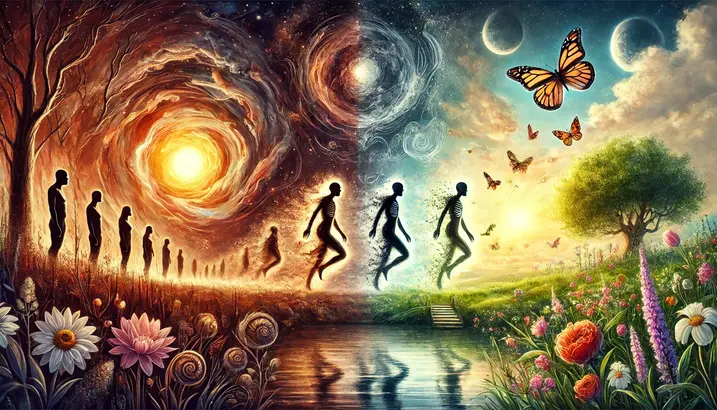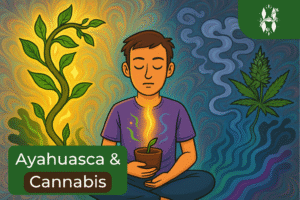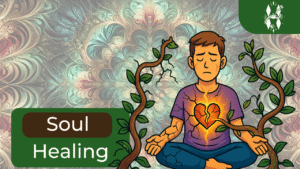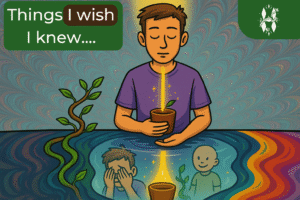Recent incidents, including one in February 2024, have linked ayahuasca to a death in media reports, fueling speculation and sensationalized headlines. This has sparked public debate about the traditional use of medicinal plants. Given the sensitive nature of this topic, it’s crucial to approach it with an objective and informed perspective which we will do in this article
Key takeaways
● Ayahuasca has been associated with death since its use became popular in Western society.
● It is estimated that approximately 4 million people from the Americas, Europe, Australia, and New Zealand have taken Ayahuasca.
● Between 1994 and 2022, approximately 60 cases of death apparently related to ayahuasca have been reported.
● To date, worldwide, no forensic examination or toxicological analysis has determined that the combination of Banisteriopsis caapi and Psychotria viridis or Diplopterys cabrerana caused someone’s death due to intoxication.
● The reported deaths have mostly been attributable to secondary causes, and some of them could have been avoided.
Table of Contents
“Between 1994 and 2023, 60 cases of Ayahuasca related deaths have been reported worldwide.”
What can happen when I take Ayahuasca?
When a person takes Ayahuasca for the first time, it is never certain what type of experience they will have, as the range of possibilities is as vast as the universe itself and will depend on each individual’s belief system, their previous experiences, their expectations, their unique and individual reality. But one thing is certain: when a person connects with the spirit of the plant (which can be the brew’s ability to activate parts of the brain that were previously inactive), new forms of thought are produced that allow you to feel a new reality.
A global survey on the adverse effects of ayahuasca, conducted between 2017 and 2019 with the participation of 10,836 people from more than 50 countries, found that 69.9% of participants reported acute physical adverse effects, primarily vomiting, and 2.3% required subsequent medical attention. Regarding mental adverse effects, 55.9% of participants experienced them in the weeks or months following consumption, although 88% considered these effects to be part of a positive process of growth or integration. (8)
How many people have taken ayahuasca?
For the year 2019 in America, Europe, Australia, and New Zealand, an estimated figure of 820,000 people was calculated. (1)
According to the latest study conducted by ICEERS (ethnobotanical education, research, and service) published in June of the year 2023, where data on the total number of people who have taken ayahuasca worldwide and possible associated deaths were collected, an estimated figure was obtained for all of America of at least 3,178,160 people, in Europe 938,312 people, in Australia and New Zealand 123,068 people, for a total of over 4 million people worldwide that have taken ayahuasca.
Find out if Ayahuasca is right for you
- Will you be safe physically and emotionally?
- How will you be supported in the ceremony?
- How do the facilitators handle difficult situations?
- How will you be able to process the experience?
- You want change, but will your life be unrecognizable after Ayahuasca?
+ 13 things to consider before drinking Ayahuasca?
How many people have died from an apparent Ayahuasca death?
Ayahuasca has been associated with death since its use became popular in Western society, and the mention of ayahuasca in the headline offered an undeniable lure from a journalistic standpoint. After all, a headline linking death to an “exotic and hallucinogenic drug” is likely to attract far more readers.
According to the last report conducted by ICEERS a total of 60 cases of possibly associated deaths have been reported to date, however, without confirmation through autopsies, all of them with secondary causes of death.
It was found that between 1994 and 2023, 60 cases of Ayahuasca related deaths have been reported worldwide. The analysis conducted so far was based on journalistic reports, which limits the possibility of identifying the circumstances and exact causes of the deaths.
No forensic examination or toxicological analysis has determined that the combination of Banisteriopsis caapi and Psychotria viridis or Diplopterys cabrerana (ayahuasca or yagé) caused someone’s death due to intoxication; that is to say, consuming ayahuasca has not been directly associated with causing death.(1)
In the article “Ayahuasca: A Review of the Risks and Benefits,” the authors address the topic of deaths and medical emergencies associated with ayahuasca consumption. Although deaths related to ayahuasca are relatively rare, these fatal events are often the result of a combination of factors, including drug interactions, preexisting medical conditions such as heart disease, and improper use of the substance. (9)
What have been the causes of death associated with those persons?
The evaluation of the cases highlights the fact that some lack accurate forensic/toxicological information, while others are not directly relevant to traditional ayahuasca preparations.(2)
According to the report, out of the total recorded deaths, in 16 cases, there is a temporal immediacy between ayahuasca consumption and death; however, in none of them was an autopsy performed, making it difficult to determine if in any case there could have been another contributing factor to the fatal outcome, for example: mixing with other medicines or contraindicated drugs, severe cardiovascular conditions, accidents, traumas or suicidal.
In 9 cases, autopsies were performed, but in none of them was it determined that the basic and most common formulation of ayahuasca presentation was the cause of death due to acute intoxication.
In 35 cases, death resulted from other factors such as homicides, suicide, substance intoxication, blows, falls, drownings, tobacco intoxication, heart attack, hyponatremia (water overdose).
The cases suggest that previous cardiac and hepatic pathologies and current use of serotonergic drugs/medications are contraindications to ayahuasca use, and that caution should be taken when using different botanical species and extracted/synthetic alkaloids to prepare ayahuasca analogues.(2)
The last case was a 73-year-old woman who died after apparently consuming ayahuasca.(3) The information so far is not clear, and there are many speculations, especially in internet news, which capitalize on the striking headline to attract attention. As of now, what is known is that this person likely had a cardiovascular disease, and that this was the cause of her death; therefore, it is very important to consider the contraindications when taking Ayahuasca and provide clear information about one’s current health status to avoid unnecessary risks.
Some news reports mention scopolamine poisoning, which is entirely different from ayahuasca, but this further highlights the sensationalist nature of journalism surrounding ayahuasca.
Another case occurred in Peru, where a Canadian man stabbed and killed a British friend in self-defense at a spiritual retreat in the Peruvian jungle because he felt he had no choice but to kill or be killed (4). The news headlines associated the violent death with ayahuasca consumption, omitting other factors within the events, such as possessing weapons during a ritual; this is a call for individual responsibility, as carrying or possessing weapons is unnecessary and puts the safety of all participants at risk.
On October 19, 2001, there was a ceremony in which Jane Maiangowi, who was aged 71 and suffering from diabetes, unexpectedly died (5). After a police investigation, a harmful substance was found. The substance in question was harmaline, which laboratory analysis determined was in the brew that was used. DMT was not found in laboratory tests. This brew was not prepared with additive mixtures containing tryptamines like P. viridis, the plant usually added to ayahuasca preparations. Media reports in both local and national newspapers described the alleged harmful substance as “ayahuasca”. Although it was determined that ayahuasca, as commonly prepared with plants containing harmala alkaloids and DMT, had no causal relation to the death, and subsequently a coroner’s report ruled the cause of death was “acute nicotine intoxication”, it was ayahuasca that was maligned in the public sphere. (5)
In another article, two cases of death are documented: the first related to a serotonin syndrome triggered by the combination of ayahuasca with an SSRI (selective serotonin reuptake inhibitor, a type of antidepressant), and the second case documents a person with preexisting heart conditions.(10)
With these secondary causes being the main culprits behind most reported deaths apparently linked to ayahuasca consumption, many of them could be prevented by ensuring a safe environment, allowing people to familiarize themselves with the surroundings to avoid falls or drownings, and reminding participants of their responsibility not to use or bring any kind of weapons to the ceremonies.
Ayahuasca rituals are not psychedelic journeys to satisfy curiosity and have stories to tell; they are an encounter with oneself, an experience of self-discovery, connection, and healing, therefore requiring maturity and responsibility.
We never know when we are going to die, and as mysterious as it is, it can also happen during a ceremony and not necessarily be related to ayahuasca.
RESULTS OF AUTOPSIES ON INDIVIDUALS WHO HAD TAKEN AYAHUASCA IN THE HOURS BEFORE THEIR DEATH | |
CAUSE OF DEATH | NUMBER OF CASES |
Undetermined cause | 2 |
Heart attack | 2 |
Tobacco intoxication | 1 |
Scopolamine intoxication | 1 |
Cervical fracture | 1 |
Hyponatremia | 1 |
Intoxication by synthetic 5-Meo-DMT | 1 |
TOTAL | 9 |
Comparing numbers with other causes of death
Other causes of deaths worldwide: Regarding car accidents, the World Health Organization (WHO) estimates that 1.35 million people die on the roads annually.
Regarding deaths caused by harmful alcohol consumption, the WHO estimates that 3 million deaths occur worldwide each year, in addition to being a causal factor in more than 200 diseases, including mental and behavioral disorders, as well as non-communicable diseases and injuries.
In 2021, 106,699 deaths from drug overdoses were recorded in the United States, including illicit drugs and prescription opioids, averaging 4,000 people each month. Deaths from antidepressant overdoses reached 5,859 cases in the United States in 2021.
By conducting a comparative analysis between the total number of deaths and their different causes (alcohol, drugs, medications, car accidents), it can be concluded that ayahuasca is a safe substance.
Precautions to Keep in Mind around Ayahuasca death
Although the ingestion of ayahuasca is a relatively safe process, it is important to consider certain precautions (as with any therapeutic substance) when undertaking ingestion.
Firstly, individuals with a history of heart attacks and severe heart diseases should not participate in the ritual or ceremony, as a weak or diseased heart increases the risk of complications for the individual.
Must read blog: Hypertension and Ayahuasca
If there is a history of psychiatric illnesses, consultation with expert groups should be sought before ingesting ayahuasca. Similarly, if psychiatric medications or other types of drugs are being consumed, this should be communicated to avoid medication interactions
If you have had recent surgery, regardless of the size, it should be reported.
Always follow the recommendations for nutrition, hydration, and personal care provided during the ayahuasca ingestion process.
Be aware that you are ingesting a medicinal plant that will induce the mind into a different state of reality, and have a clear purpose for why the ingestion is being performed, beyond recreational purposes or out of curiosity.
A very important part of this process is to be honest and clear about your intentions, any illnesses, or contraindications that the participant may have. Sometimes, attempting to conceal this information in order to drink ayahuasca puts oneself at unnecessary risk.
“Participants with personal death experiences showed a greater tendency to use problem-focused coping strategies and reported a fuller life with a greater sense of fulfillment.”
Ayahuasca and Death
Talking about death means diving into a field often feared, associated with sadness, pain, tears, and still a taboo despite being humanity’s faithful companion throughout its existence, always present in every organism and living being that has ever existed on this planet; let us remember, without death, there is no life, death is transformation.
The word Ayahuasca comes from Quechua, which etymologically means “Aya” (spirit or deceased) and “waska” (vine or rope), the rope of the spirit or the rope of the dead, which for the worldview of indigenous communities, represents the vine that allows the spirit to leave the body. Therefore, it can be understood from the etymology of the word ayahuasca what its purpose will be, so when talking about death, it is necessary to have a perspective that goes beyond mere physical death.
A recent study conducted in 2023, which surveyed 306 ayahuasca users in Israel, investigated the prevalence and impact of ayahuasca-induced personal death experiences, finding that 67% of participants reported having at least one ayahuasca-induced death experience, with most reporting a change in their attitude towards death. These situations were generally seen as intense and transformative, significantly altering individuals’ perspectives on life and death. Participants with personal death experiences showed a greater tendency to use problem-focused coping strategies and reported a fuller life with a greater sense of fulfillment. (6)
Is death a process separate from our daily life?
Since birth, we are destined to die, and from the moment of conception itself, some cells die to make way for others and thus allow the cycle of life to continue. Death is as natural as life itself, inherently united, necessary and interdependent on each other, and yet mysterious and apparently foreign to our daily lives. We live without thinking that we are going to die, but we die every day from a part of our being: cells die, skin dies, ideas die, our ego dies. You never know when you will do something for the last time, and it is that lack of awareness of the present moment (which is the only moment that exists) that prevents you from seeing that you will not be here forever, and that the things you do today as routines will one day be the last time you do them.
Emotions, death, and Ayahuasca
It is said that one of the deaths that occur after the ingestion of ayahuasca, and which tends to be part of the strongest and most transcendental experiences for many people, is what is known as the “death of the ego.” The word ego means “I” in Latin; it is the part of the mind through which a person recognizes themselves and begins to create their own identity. It is here, in the “ego,” where the belief system is established, and it is the part of us that is responsible for regulating between the most instinctive part of our brain, the idealistic part, and the reality of the external world.
Must read blog: Ego death on Ayahuasca
It is also in this mental plane where we encounter our fears, our insecurities, our deepest beliefs that condition our way of living and are often the cause of suffering; it is here, in our belief system, where what we call our darkness is formed and stored: envy, jealousy, selfishness, resentment, anger, low self-esteem, traumas, all of them linked to emotions so deep that they are sometimes difficult to recognize and understand, and they are what lead us to repeat patterns of behavior that end up harming us.
In the Phenomenological analysis of experiences of ayahuasca (2020) users frequently describe ayahuasca as a tool for healing, both physically and psychologically. It is often used to address deep-seated emotional issues, past traumas, and to gain clarity on personal and existential questions. (7)
In Search of Healing
And so, on any given day in search of answers for your life, you decide to take ayahuasca, and that night during the ceremony, you begin to access aspects of your subconscious that were unknown to you. You start to see your deepest feelings, your own faults, the way you judge and live your life, and suddenly you feel like you’re beginning to die. You realize that true control does not exist; you begin to see the need to accept what has been painful in your life, forgiving situations you never thought you would.
You traverse unresolved traumas to free yourself from repressed emotions in your subconscious, and this whole process can be very painful, but how could it not be? We are talking about profound transformations, soul healing, spiritual healing, and to achieve that state, one must die to old beliefs, to old pains and wounds that beg to be healed, leading to profound changes in the priorities of your life. And then you experience your first conscious death, you begin your journey of transformation and inner healing.
Must read blog: Ayahuasca healing
Conclusions
Death as a natural process of life should be approached with kindness, accepted with ease, and acknowledged with profound respect.
With ayahuasca, one can experience moments of psychological death, emotional deaths, ego deaths, and although one may never be prepared for such cases, embracing them maturely while seeking the teachings behind the process can lead to great life lessons that contribute to personal growth.
No forensic examination or toxicological analysis, in any period or place worldwide, has attributed a death by intoxication to the most typical ayahuasca recipe, with Banisteriopsis caapi and Psychotria viridis or Diplopterys cabrerana.
By conducting a comparative analysis between the total number of deaths and their different causes (alcohol, drugs, medications, car accidents), it can be concluded that ayahuasca is a safe substance.
Those deaths reported by the media in which ayahuasca may have played an indirect role could have been prevented by incorporating safety standards when admitting participants, supervising the experience, and integrating it afterward, offering psychological follow-up in each case.
References
1. www.iceers.org/wp-content/uploads/ICEERS_Ayahuasca_deaths_es.pdf
2. dos Santos, R. G. (2013). A Critical Evaluation of Reports Associating Ayahuasca with Life-Threatening Adverse Reactions. Journal of Psychoactive Drugs, 45(2), 179–188
3.www.eltiempo.com/colombia/medellin/mujer-de-73-anos-la-cuarta-estadounidense-en-morir-en-la-ultima-semana-en-antioquia-852986
4.www.theguardian.com/world/2016/jan/13/canadian-who-killed-brit-on-spiritual-retreat-says-it-was-kill-or-be-killed
5.Tupper, K. W. (2011). Ayahuasca in Canada: Cultural phenomenon and policy issue. The internationalization of ayahuasca, 319-325.
6. David, J., Bouso, J. C., Kohek, M., Ona, G., Tadmor, N., Arnon, T., Dor-Ziderman, Y., & Berkovich-Ohana, A. (2023). New study reveals how common ayahuasca-induced death experiences are and their link to personal transformation. PsyPost.
7. Wolff, T.J. (2020). Phenomenological analysis of experiences of ayahuasca. In: The Touristic Use of Ayahuasca in Peru. Sozialwissenschaftliche Gesundheitsforschung. Springer VS, Wiesbaden.
8. Bouso, J. C., Andión, Ó., Sarris, J. J., Scheidegger, M., Tófoli, L. F., Opaleye, E. S., Schubert, V., & Perkins, D. (2022). Adverse effects of ayahuasca: Results from the Global Ayahuasca Survey. PLOS Global Public Health.
9. Rodríguez, J. H., & Martínez, E. G. (2019). Ayahuasca: A review of the risks and benefits. Addiction Research & Theory, 27(5), 392-406.
10. Becker, L. C., & Roberts, R. W. (2022). Adverse effects and fatalities associated with ayahuasca use: A systematic review. Drug Safety, 45(8), 823-836.




